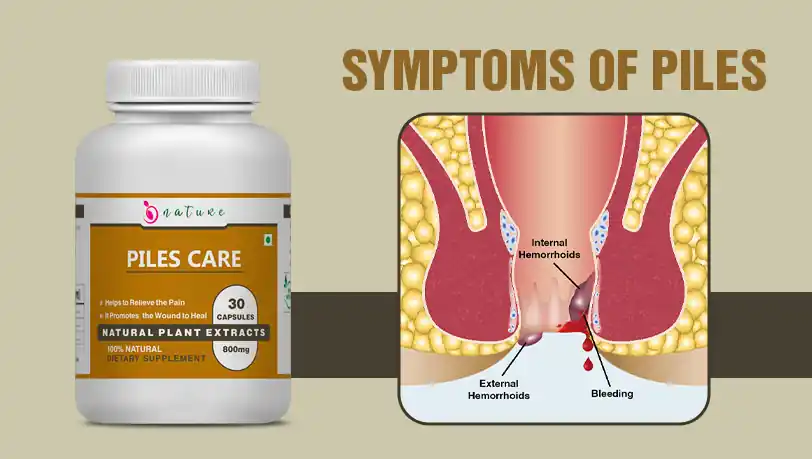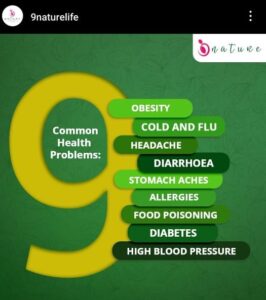Piles, otherwise called hemorrhoids, can be an excruciating and awkward condition, however recognizing the early warning signs is fundamental for ideal treatment. In this article, we dig into the symptoms of Piles and why overlooking them can prompt huge uneasiness.
We discuss common indicators like rectal bleeding, itching, and discomfort, and provide insights into the various types of piles. By understanding these symptoms and their implications, you can take proactive steps to manage and seek appropriate medical attention, ensuring your overall health and well-being are not compromised by this common ailment.
Piles, restoratively known as hemorrhoids, are a typical and frequently awkward condition that can influence individuals of any age and gender. While piles don’t separate among people, it’s fundamental to comprehend the particular symptoms that guys might insight. Here we’ll investigate the symptoms of piles in men, their causes, and herbal medicine potential treatment choices.
Before diving into the symptoms, it’s essential to grasp what piles are. Piles care are swollen blood vessels located around the rectum or in the anus. They can be internal or external, and they often result from increased pressure in the lower rectum. This pressure can be due to various factors, including straining during bowel movements, chronic constipation, or even genetics. (Longman, R.J. and Thomson, W.H.F.)
Symptoms Of Piles
Piles, otherwise called hemorrhoids, can cause a scope of side effects that can be awkward and troublesome. It is vital to perceive the symptoms to look for suitable treatment and alleviation. Here are a few normal symptoms of piles.
Symptoms of piles, otherwise called hemorrhoids, are enlarged veins in the rectal region. The side effects of symptoms of piles can shift from gentle to extreme, causing uneasiness and burden. Normal side effects incorporate pain or discomfort during bowel movements, itching, swelling, and a burning sensation, Piles can likewise prompt the presence of blood in the stool or on the bathroom tissue.
At times, an irregularity or distension might be felt close to the rear end. These symptoms of piles can slow down everyday exercises and personal satisfaction. It is vital to perceive the symptoms of piles and look for suitable treatment to mitigate uneasiness and forestall further intricacies. (Jayne, D.G. and Seow-Choen, F., 2002)
Early Stage Piles Symptoms
- Bright red blood after you poo: One of the most noticeable symptoms of piles is the presence of bright red blood on the bathroom tissue or in the latrine bowl after a solid discharge. This is frequently brought about by draining from the enlarged veins in the rectal region.
- Itchy Anus: Piles can cause tingling and irritation around the anus. This tingling sensation might be steady and can be aggravated by dampness or erosion.
- Feeling like you actually need to poo after going to the toilet: Piles can give a vibe of deficient solid discharge, even subsequent to passing stool. This sensation of expecting to go again can be awkward and may continue.
- Bodily fluid (Mucus) in your clothing or on bathroom tissue subsequent to cleaning: Piles can bring about the creation of an overabundance of bodily fluid, which might be observable in your clothing or on tissue in the wake of cleaning. This bodily fluid is much of the time joined by different side effects like tingling or bothering.
- Lumps around your anus: Enlarged veins in the rectal region can prompt the arrangement of irregularities or knocks around the butt. These knots might be difficult or delicate to contact.
- Pain around your Anus: Piles can cause torment, particularly during or after solid discharges. The aggravation might go from gentle distress to serious and can impede everyday exercises.
Piles
It is vital to take note that anybody can foster suggestive hemorrhoids, in spite of the fact that they are more normal in specific people. Factors that can expand the gamble of creating heaps incorporate being overweight or corpulent, pregnancy, following a low-fiber diet, encountering persistent clogging or the runs, consistently lifting weighty items, investing inordinate energy sitting on the latrine, and stressing during solid discharges.
Hemorrhoids can happen both inside and remotely. Outside hemorrhoids foster under the skin around the rear end and can be bothersome, excruciating, and periodically drain. Interior hemorrhoids structure inside the rectum and may cause death, however, they are generally not excruciating. Prolapsed hemorrhoids can happen when interior or outer hemorrhoids stretch and lump beyond the butt, causing dying, torment, and uneasiness.
In the event that you experience side effects like rectal dying, irritated butt, hard knots close to the rear-end, torment or hurt in the butt (particularly while sitting), or prolapsed hemorrhoids, it is essential to talk with medical services proficient for legitimate determination and therapy choices. Early mediation herbal medicine can assist with lightening side effects and forestall entanglements related to Piles. (Steinberg, D.M., Liegois, H. and Alexander-Williams, J., 1975.)
Symptoms Of Piles In Males:
1. Rectal Bleeding: Blood may appear on the toilet paper, in the toilet bowl, or on the stool itself. The blood is typically bright red, indicating that it’s coming from the lower part of the digestive tract. It’s essential not to ignore rectal bleeding, as it could be a sign of piles or other, more serious conditions, such as colorectal cancer.
2. Itching and Irritation: Men with piles often experience itching and irritation around the anus. This discomfort can be particularly worrisome and can interfere with daily activities. It may be due to the inflammation and swelling of the piles, as well as the difficulty in keeping the anal area clean.
3. Pain and Discomfort: Piles can cause varying degrees of pain and discomfort. Internal piles may cause a dull, aching pain, while external piles can be more painful, especially when sitting or during bowel movements. The pain can range from mild to severe, and it may be accompanied by a throbbing sensation.
4. Swelling and Lump Formation: Some men with piles notice a swelling or lump around the anus. These swollen blood vessels can protrude from the rectum (external piles) or remain inside (internal piles). The presence of a lump can cause discomfort and make sitting or moving around uncomfortable.
5. Difficulty in Bowel Movements: Piles can lead to difficulty in passing stools. Men may experience straining during bowel movements, which can worsen the condition and lead to more discomfort. The strain can also result in additional symptoms, such as anal fissures or small tears in the anal lining.
6. Mucus Discharge: In some cases, piles can cause a mucus discharge from the anus. This discharge may be clear or have a slight tinge of blood. It can be a sign of piles and should not be ignored.
7. Incomplete Evacuation: Men with piles may feel like they haven’t completely emptied their bowels after a bowel movement. This sensation can be frustrating and is often due to the presence of internal piles that obstruct the rectal passage.
Heaps are a typical condition that influences all kinds of people. However, understanding the specific symptoms that men may experience is crucial for timely diagnosis and treatment. If you or someone you know is showing any of these symptoms, it’s essential to consult a healthcare professional for a proper evaluation. Treatment options for piles can range from lifestyle changes and dietary modifications to medications, herbal medicine, and in severe cases, surgical procedures. Early intervention can help manage the symptoms and improve the quality of life for men dealing with this uncomfortable condition.
Symptoms Of Piles In Females:
Piles, also known as hemorrhoids, are a common and often painful condition that can affect individuals regardless of their gender. However, it’s essential to understand that women may experience specific symptoms related to piles due to factors such as pregnancy and child birth. Here, we will explore the symptoms of piles in women, their causes, herbal medicine and potential treatment options.
Prior to diving into the symptoms of piles, it means quite a bit to get a handle on what Piles are. Piles are enlarged veins situated around the rectum or in the anus. They can be inner or outside and result from expanded tension in the lower rectum. This tension can be ascribed to different elements, including stressing during solid discharges, Chronic constipation, or hereditary qualities.
1. Rectal Bleeding: One of the hallmark symptoms of piles in women is rectal bleeding. Blood might show up on the tissue, in the toilet bowl, or on the actual stool. The blood is normally bright red, demonstrating that it’s coming from the lower part of the gastrointestinal system. It’s fundamental not to disregard rectal dying, as it very well may be an indication of piles or other, more difficult circumstances, like colorectal disease.
2. Itching and Irritation: Women with piles often experience itching and irritation around the anus. This discomfort can be particularly worrisome and can interfere with daily activities. It may be due to the inflammation and swelling of the piles, as well as the difficulty in keeping the anal area clean.
3. Pain and Discomfort: Piles can cause varying degrees of pain and discomfort in women. Internal piles may cause a dull, aching pain, while external piles can be more painful, especially when sitting or during bowel movements. The aggravation can go from gentle to serious, and it very well might be joined by a pulsating sensation.
4. Swelling and Lump Formation: Some women with piles notice a swelling or lump around the anus. These swollen blood vessels can protrude from the rectum (external piles) or remain inside (internal piles). The presence of a lump can cause discomfort and make sitting or moving around uncomfortable.
5. Difficulty in Bowel Movements: Piles can lead to difficulty in passing stools for women. They may experience straining during bowel movements, which can exacerbate the condition and lead to more discomfort. The strain can likewise bring about extra symptoms, like butt-centric gaps or little tears in the butt-centric covering.
6. Mucus Discharge: In some cases, piles can cause a mucus discharge from the anus in women. This discharge may be clear or have a slight tinge of blood. While not quite so normal as different symptoms, it very well may be an indication of piles and ought not to be overlooked.
7. Pelvic Pressure (during Pregnancy): Pregnant women are more susceptible to piles due to increased pressure on the pelvic area caused by the growing uterus. This pressure can lead to the development or exacerbation of piles during pregnancy. Symptoms may include rectal bleeding, itching, and discomfort.
8. Postpartum Piles (after Child birth): After giving birth, women may develop or experience worsening piles due to the strain placed on the rectal area during delivery. Postpartum piles can cause pain and discomfort during a time when women are already dealing with numerous physical changes.
Conclusion:
Piles are a typical condition that influences all kinds of people. Nonetheless, ladies might encounter explicit side effects connected with elements like pregnancy and labor. Understanding these symptoms is pivotal for ideal analysis herbal medicine and treatment. On the off chance that you or somebody you know is displaying any of the side effects referenced above, counseling a medical care proficient for a legitimate evaluation is significant. Treatment choices for Piles can go from way-of-life changes and dietary adjustments to prescriptions and, in extreme cases, surgeries. Early mediation can assist with dealing with the side effects and work on the personal satisfaction of ladies managing this awkward condition.
You can also read: From Pain to Relief: Discover the Best Treatment for Piles





